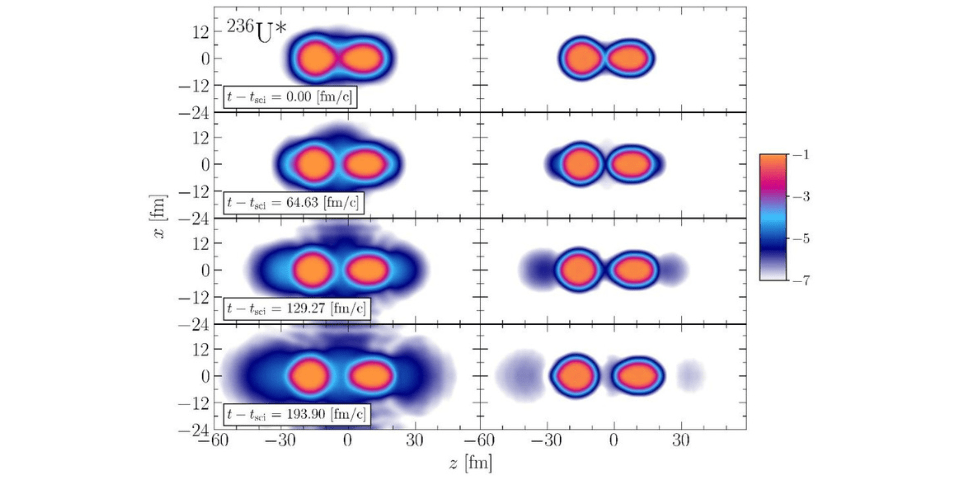Nuclear fission – when the nucleus of an atom splits in two, releasing energy – may seem like a process that is fully understood. First discovered in 1939 and thoroughly studied ever since, fission is a constant factor in modern life, used in everything from nuclear medicine to power-generating nuclear reactors. However, it is a force of nature that still contains mysteries yet to be solved.
Researchers from the University of Washington, Seattle, or UW, and Los Alamos National Laboratory used the Summit supercomputer at the Department of Energy’s Oak Ridge National Laboratory to answer one of fission’s biggest questions: What exactly happens during the nucleus’s “neck rupture” as it splits in two?


